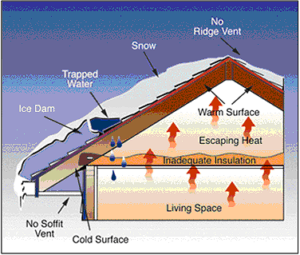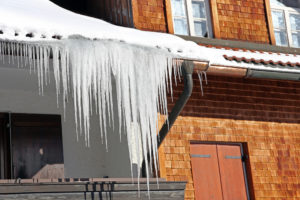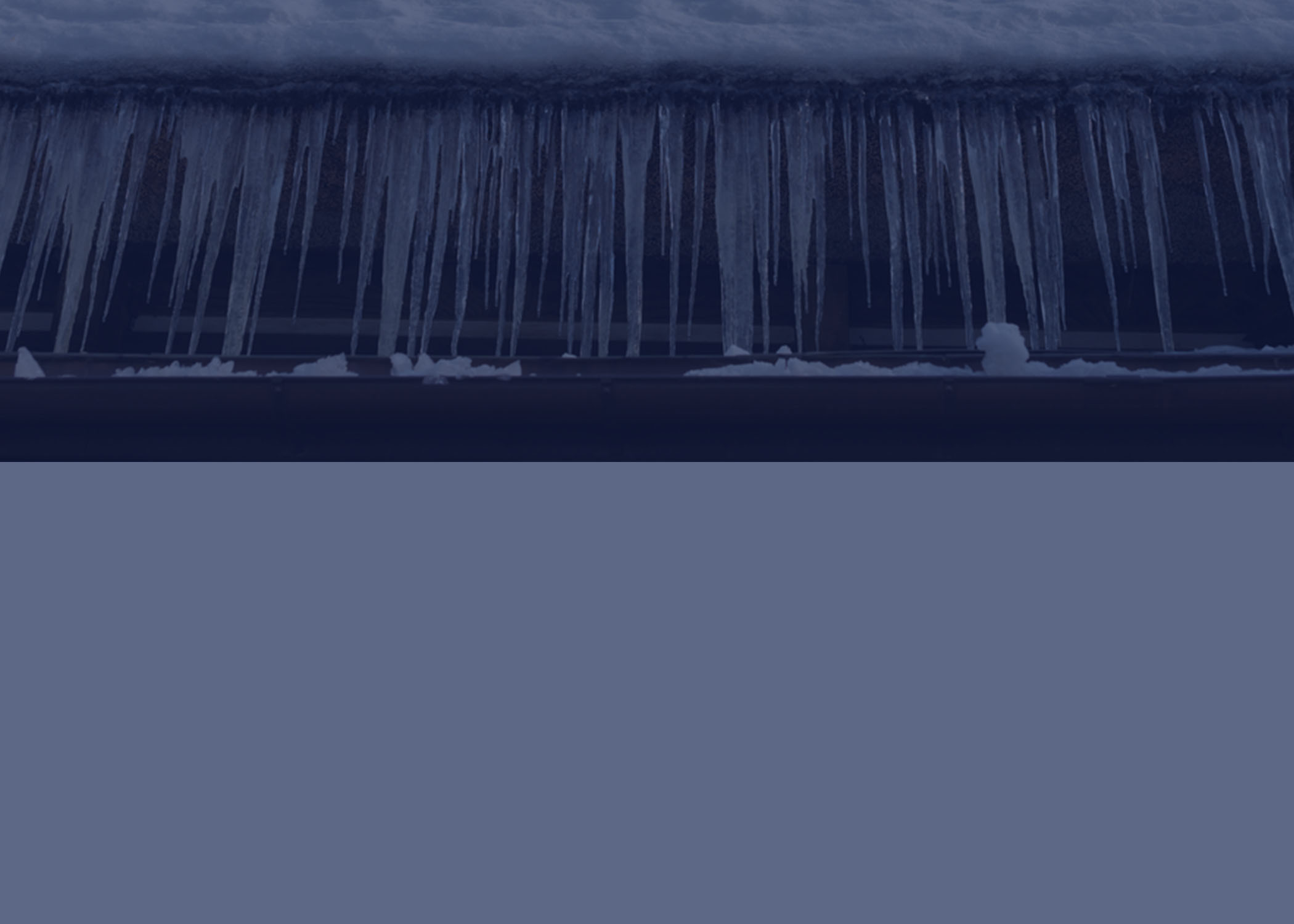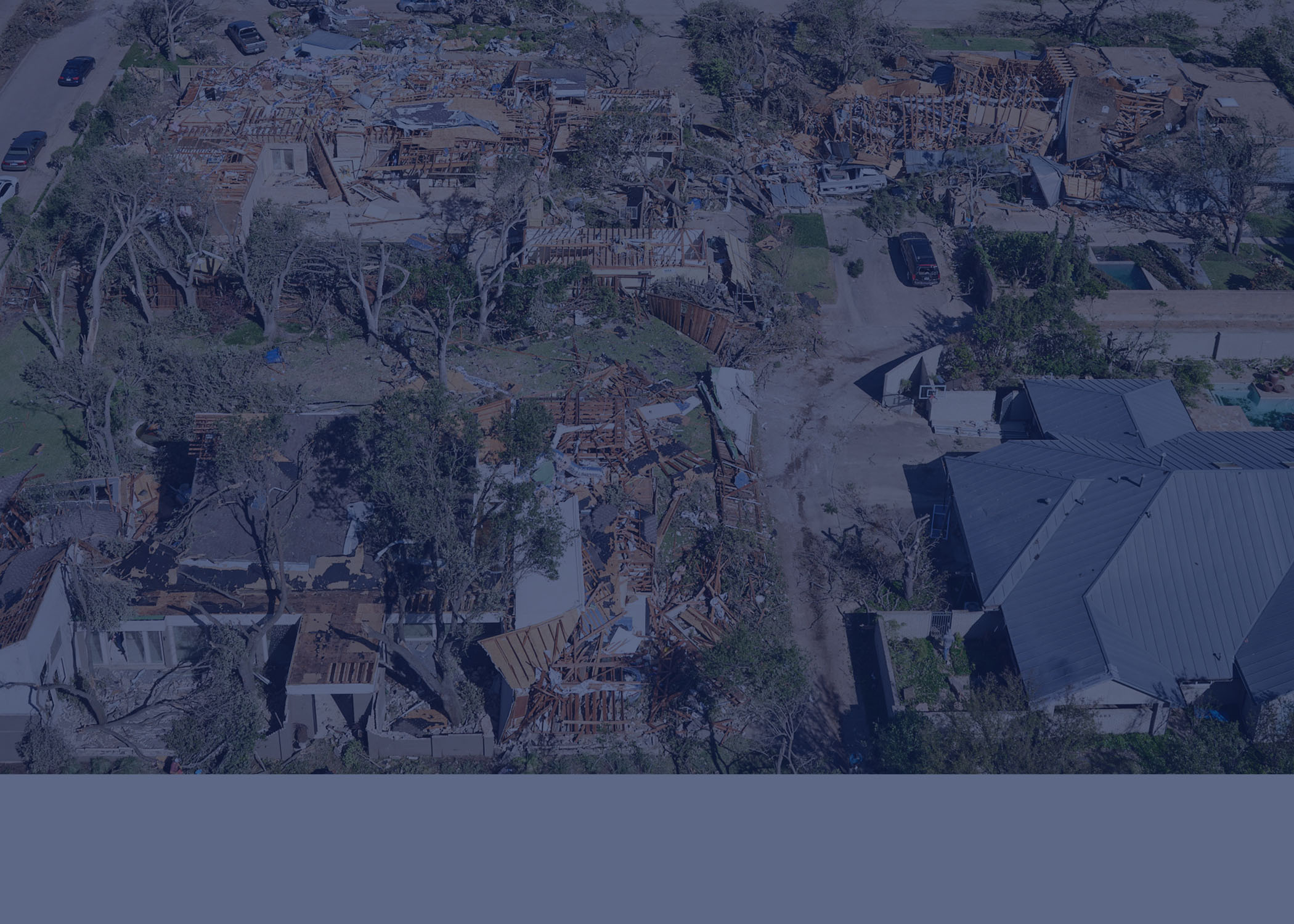Ice dams form during the winter months in regions where the temperature is below freezing. When there is snow on the roof of a building and the heat from inside the building heats up the roof, it causes the snow to melt, and the liquid runoff then drains to the roof edge. The runoff then refreezes and begins to accumulate as ice. There are many factors that contribute to the formation of ice dams. These include inadequate roof ventilation, building heat loss, and roof system design.

Ice dams can cause significant damage to a building over time, including water intrusion and damage to the roofing system. The water that backs up behind an ice dam can leak into the building and can cause damage to walls, ceilings, insulation, and the roofing system.

There are a variety of ways to control the formation of ice dams. Maintain gutters and downspouts, and keep them free of leaves, sticks, and other debris. This allows melted snow from the roof to flow into gutters and then drain through downspouts. Safely remove excess snow from the roof, such as by using roof rakes or hiring a professional. Keeping heavy snow buildup off of the roof reduces chances for both ice dam formation and collapse due to excessive snow load. If necessary, consult a reputable expert to evaluate the insulation and ventilation in your attic and make the necessary improvements.
_
Top Image: Weather.gov [ https://www.weather.gov/grr/roofIceDams ]

